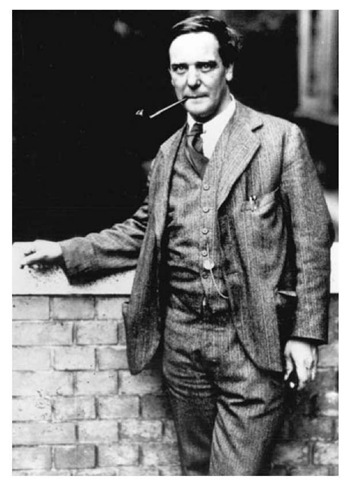Pyotr Kapitsa established his reputation as a scientist in cryogenics, or the study of low-temperature physics, as he discovered the phenomenon of superfluidity in helium II. However, Kapitsa left perhaps a greater mark on society through his determined stance in defense of intellectual freedom and moral decision-making in the face of totalitarian suppression under the Stalinist regime in the Soviet Union. In the absence of Kapitsa’s principled resistance of Soviet efforts to dictate the course of scientific research, Soviet scientists would have enjoyed much less latitude.
Pyotr Leonidovich Kapitsa was born on July 8 (or 9), 1894, in Kronstadt, an island near St. Petersburg, Russia. His mother was Olga Ieroni-movna Stebnitskaya, a renowned folklorist who also worked in higher education, and his father was Leonid Petrovich Kapitsa, a lieutenant general in the engineering corps. He married Nade-sha Tschernosvitova in 1916. He studied under A. F. Ioffe in the electromechanics department of the Petrograd Polytechnic Institute, where he collaborated with Nikolai N. Semenov to propose a method for measuring atomic magnetism, which was later employed in Otto Stern’s famous experiments in 1921. Kapitsa graduated in 1918 with an electrical engineering degree, and remained as a lecturer at the institute.
The violence and famine of the Bolshevik Revolution laid claim to the lives of his wife and young child. In 1921, Kapitsa traveled to England (at the suggestion of Ioffe and through the influence of Maxim Gorky) to work under Ernest Rutherford at Cambridge University’s Cavendish Laboratory. In 1923, he placed a cloud chamber in a strong magnetic field to observe the bending paths of alpha- and beta-particles emitted by radioactive nuclei. That year he received his doctorate and won the james clerk maxwell fellowship, and the next year, Cambridge named him assistant director of magnetic research at Cavendish and a fellow of Trinity College. Also in 1924, he developed methods for creating very strong but short-lived magnetic fields. In 1927, he married Anna Alekseevna Krylova, and together the couple had two sons, Sergei and Andrei, both of whom became scientists
In 1929, the Royal Society inducted Kapitsa into its fellowship, and the next year the prestigious society appointed its first foreign member in over 200 years as its Messel Research Professor. By then, he had turned his attention to low-temperature physics, having invented a means of liquefying helium in much greater quantities than was previously possible. At the urging of Rutherford and under funding from the German chemist Ludwig Mond, the Royal Society built the Mond Laboratory expressly to host Kapitsa’s magnetics and low-temperature cryogenics research, installing the Russian as the lab’s director in 1933.
The next year, Kapitsa returned to the Soviet Union, his sixth visit to his homeland in 13 years, to attend the International Congress marking the hundredth anniversary of D. I. Mendeleyev’s birth. On September 25, 1934, the Soviet government detained Kapitsa from returning to England, commencing his ongoing struggle for scientific (and personal) freedom. Kapitsa used the power derived from his international prominence and his scientific reputation to resist governmental control—for example, he refused to conduct any research, thereby forcing the state to purchase all of the equipment from the Mond Laboratory, transport it to Russia, and use it to outfit a lab for him at the S. I. Vavilov Institute for Physical Problems, which the government also established expressly for him. However, Kapitsa continued to play his political advantage by refusing the directorship of the institute for almost a year.
Pyotr Leonidovich Kapitsa established his reputation through research in cryogenics, but his greatest impact may have come from his lifelong defense of intellectual freedom under the Stalinist regime in the Soviet Union.
In his new lab, Kapitsa focused his cryogenics research on helium II, investigating the properties of this form of liquid helium that exists near absolute zero. When cooled below 2.17 degrees Kelvin, helium II reaches a state of viscosity that Kapitsa described as "superfluid," an even better medium for conducting heat than copper. He published classic papers on superfluidity in 1938 and 1942. In 1939, he invented a turbine for producing liquid oxygen.
After World War II, Kapitsa again asserted his power by refusing to contribute to the Soviet development of atomic weaponry, prompting the government to place him under house arrest. His insistence on maintaining intellectual freedom and moral reasoning in science is perhaps a more significant legacy than his actual scientific contributions. In 1955, two years after Stalin’s death, Kapitsa finally returned to his directorship at the institute, where he focused his research on plasma physics, devising a continuous high-pressure method for heating plasma to temperatures of 2 million degrees Kelvin, causing the so-called fourth state of matter to lose its electrons to become electrified ions. He also investigated high-power microwave radiation, inventing the planotron and nigotron generators.
Throughout his career, Kapitsa received honors internationally in recognition of his important contributions: he received a dozen honorary degrees from almost as many countries, and he belonged to the primary scientific societies in practically every important country. He also received numerous awards: in 1965, Kapitsa was finally allowed to leave the Soviet Union (for the first time in more than three decades) to accept the Niels Bohr International Gold Medal from the Danish Society. In 1978, his pioneering work in cryogenics and his discovery of the superfluidity of helium II were finally recognized by the Royal Swedish Academy of Sciences, which granted him the Nobel Prize in physics, in conjunction with Arno Penzias and Robert W. Wilson, who discovered cosmic microwave background radiation. Kapitsa died in Moscow on April 8, 1984.

